Popular Cars Illustrated.
I believe that this interesting booklet was published in 1951. Titled "Popular Cars Illustrated", it offered the reader a tantalising glimpse of world cars, some but not all of which were on sale at the time - in theory, as new cars were still far from being widely available at the time in the UK, and memories of fuel rationing were still very fresh in the memory (the post-war rationing ended in May 1950). It was put together and printed by The Raleigh Press, of Exmouth in Devon, and cost the princely sum of 9d. The cover features a modern motor-car streaking along an open road. We're told that this booklet was a companion to "WHERE'S THAT CAR FROM", which I feel that I've a copy of somewhere around here also. A pocket-sized production, it measures just 5.5" x 4".
|
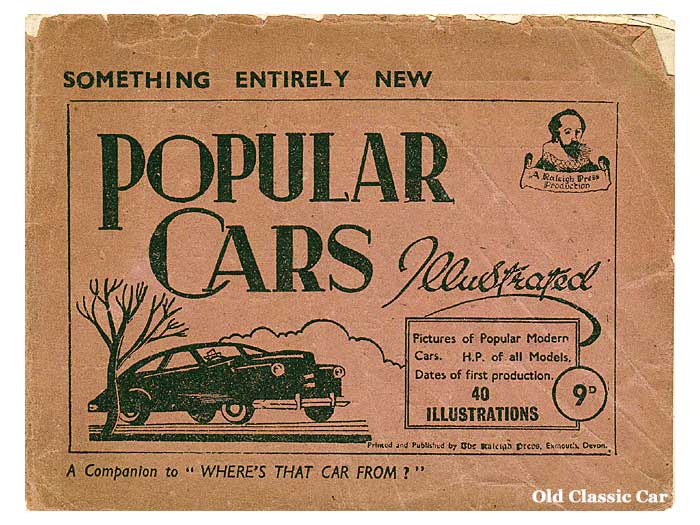
|
|
Forty cars feature, some British, others from further afield. Typically the illustrations are either low-resolution press photographs, or images lifted from factory publications (handbooks etc), and they're joined by a few nuggets of information about the manufacturer, the car, and in some cases their vital statistics. A random selection of the cars featured within Popular Cars Illustrated are shown below for interest. Some are cars that were on sale at the time, while others are earlier. The interpretation of the word "popular" in the title of this booklet is stretched in a few cases, but perhaps it's meant to mean popular (fondly thought of) and not just popular (commonly encountered), not that it matters particularly.
|
A selection of cars.
The first car to feature is the Wolseley car number one of 1896, and is faced by a Siddeley Autocar of 1903, while over the page an equally venerable 8.5hp Humber is to be found. Alvis receives a mention, along with an illustration of a recent 14hp saloon, followed by Armstrong Siddeley, illustrated by a side-on view of a Hurricane Coupe.
|
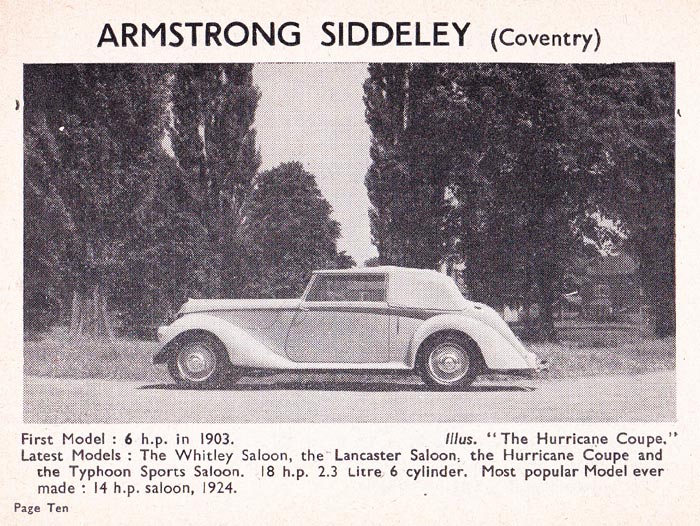
|
|
Opposite the Armstrong Siddeley is an illustration of Aston Martin's low-slung 2-Litre "Sports Roadster", represented by car registration THX 231 which intriguingly shows as still being alive on DVLA's database, albeit un-taxed. There are photos of it online, taken in recent times. Apparently it was the first David Brown Aston (DB1) to be sold, it featured in contemporary brochures, road tests, and other promotional activities. The original colour was pale blue metallic but it seems to be black now.
|
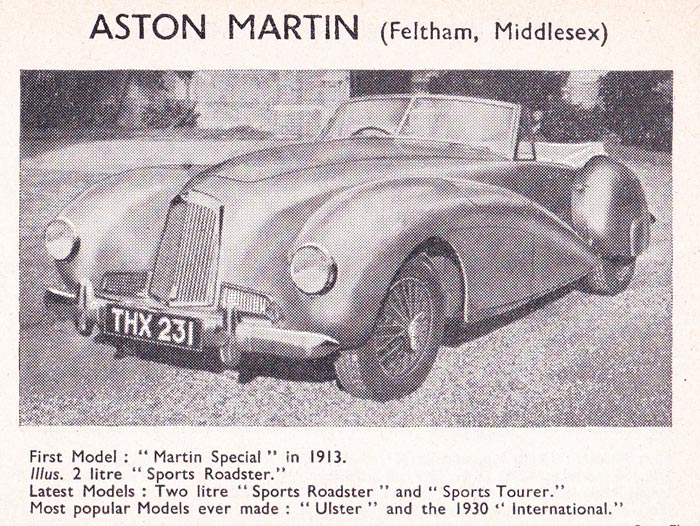
|
|
Austin of England is next in the spotlight, as is an illustration of an Austin A70 Hampshire. The latest models are given as the A70 and the A90 Atlantic, but no mention of the the A40 Devon.
|
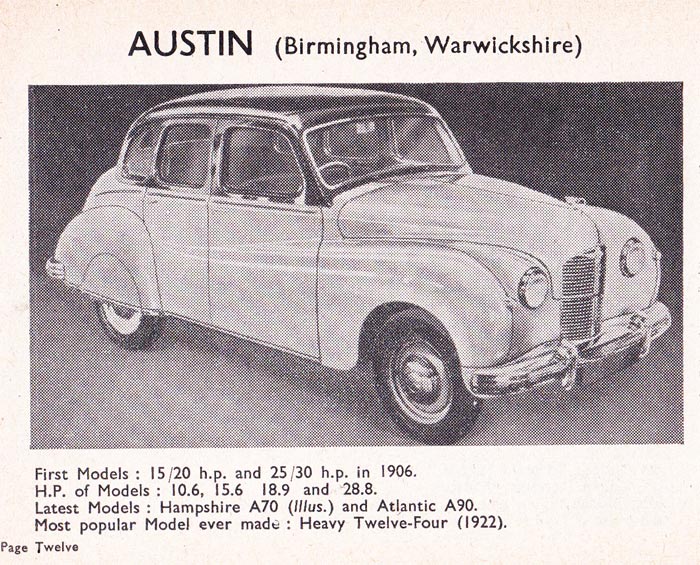
|
|
Next to feature is BSA and their "Open Four-Seater", reg. EOM 21 (a Birmingham issue from 1938).
|
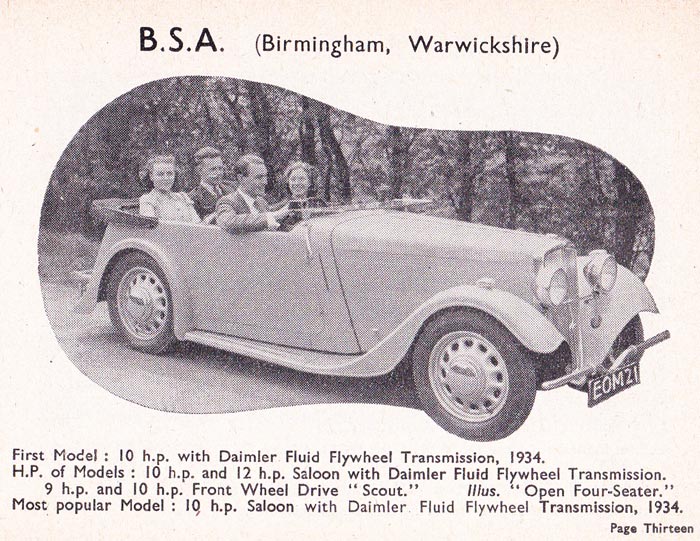
|
|
Flick past pages dedicated to Bentley (MkVI), Buick (Super four-door sedan), Cadillac (Sixty Special), Chrysler (Windsor), Citroen (15hp Light 15), Daimler (DB18), FIAT (6hp Topolino), and Ford (Prefect E493A), we land on the Hillman page, ably illustrated by one of its most popular models, the Minx.
|
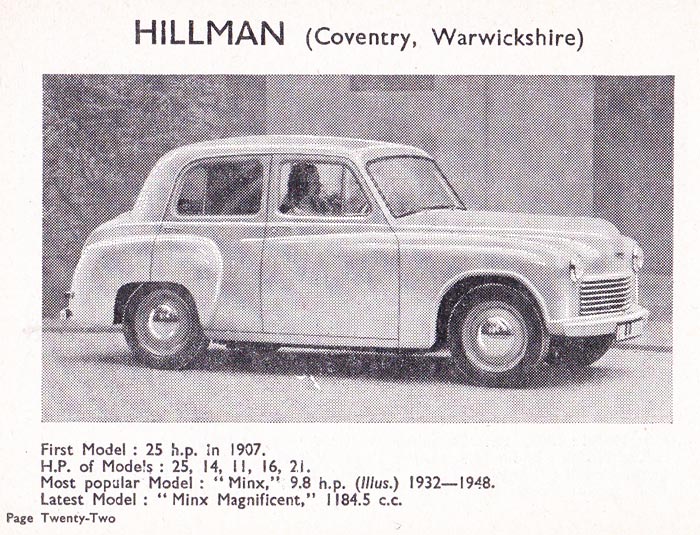
|
|
Opposite Hillman is another Rootes Group offering, this time the Humber, accompanied by an illustration of a magnificent Super Snipe Saloon.
|
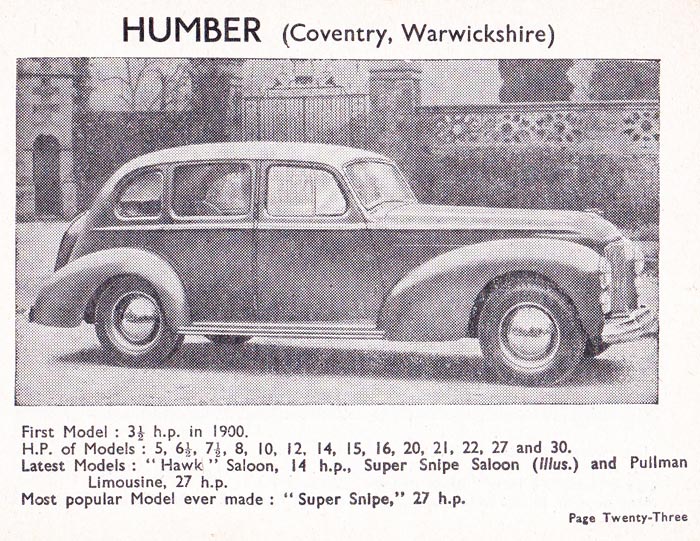
|
|
Recognition then follows for Invicta (drophead coupe), Jaguar (MkV), Jowett (Javelin), and Lagonda (2.6 saloon), before landing on the page for Lanchester, headlined by a period snapshot of a Briggs-bodied Lanchester LD10, a well-made mid-sized car of the era.
|
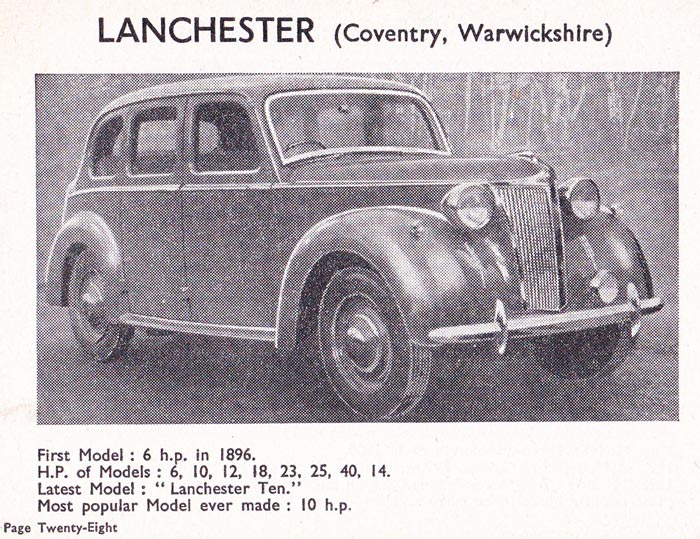
|
|
Opposite the page for Lanchester is Lea Francis, and a side-on view of the Sports model.
|
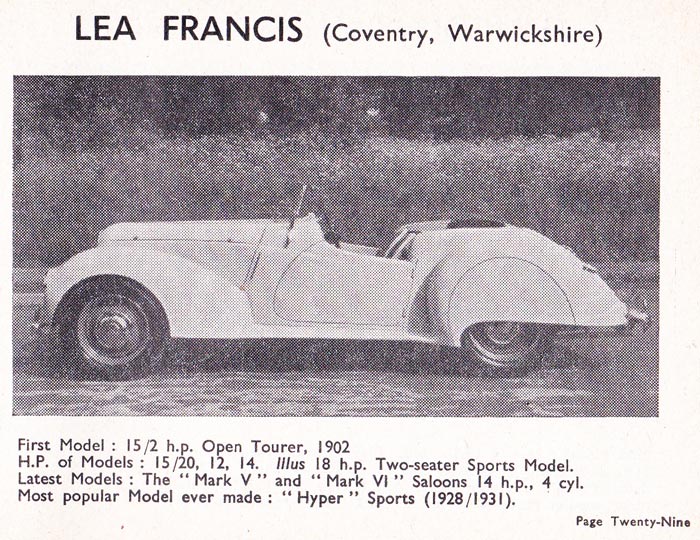
|
|
The US of A is then represented by Lincoln (Cosmopolitan Sedan), while Germany's Mercedes-Benz and its pre-war 540 receive a nod. No book titled Popular Cars would be complete without an MG sports car, so page 32 is given over to Abingdon's finest and a drawing of a "TC", facing a "flat rad" Morgan on the opposite page. Morris is represented by a "lowlight" Minor MM, while Packard and its streamlined "Clipper" also receives a mention. Peugeot (202) and Renault (4CV) then follow on, with Riley (RM) and Rolls-Royce (Silver Wraith) hot on their heels. Rover, and its 75 (P4), greet the reader next.
|

|
|
The Singer SM1500 was never a big seller, and features along with its maker on page 41.
|
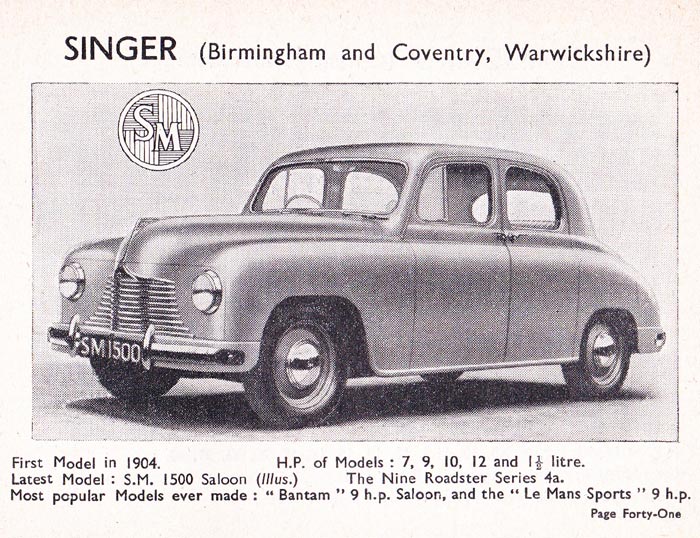
|
|
The cars of Standard (Vanguard Phase 1) and Studebaker (Champion) occupy the next two pages, while overleaf the products of Sunbeam-Talbot (80) and Triumph (Mayflower) occupy the reader's interest momentarily before things move to Vauxhall, and their upright L-Type Velox.
|
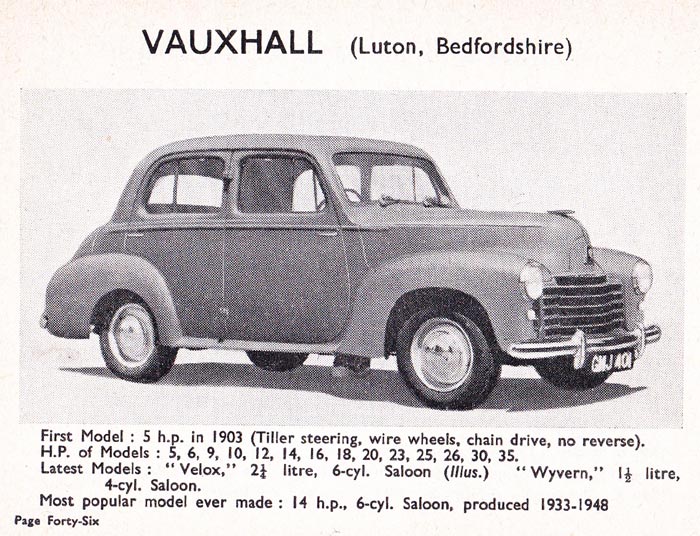
|
|
Directly facing the Velox on the opposite page is a Wolseley 6/80 representing the Cowley-based firm, the last manufacturer and car to feature in this slim publication.
|
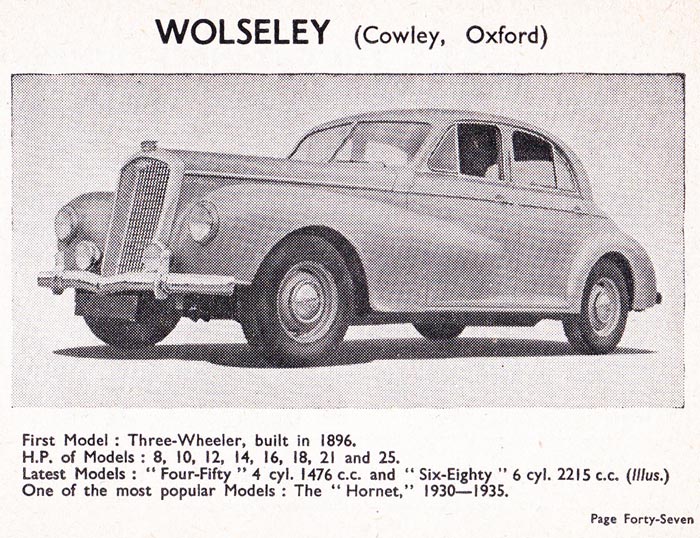
|
|
The final page is given over to an advertisement for sister publication "WHERE IS THAT CAR FROM?", which lists out registration letters and the locations that they were issued in.
|
|
All in all, a very interesting little book, that served to shed light on popular cars of the day, with a sprinkling of the obscure (the Mercedes-Benz 540 for example) to keep the reader hooked.
|
|
Return to the Motor Collectables section to find many more pages relating to period publications and items of motoring ephemera that date back many decades.
|

















